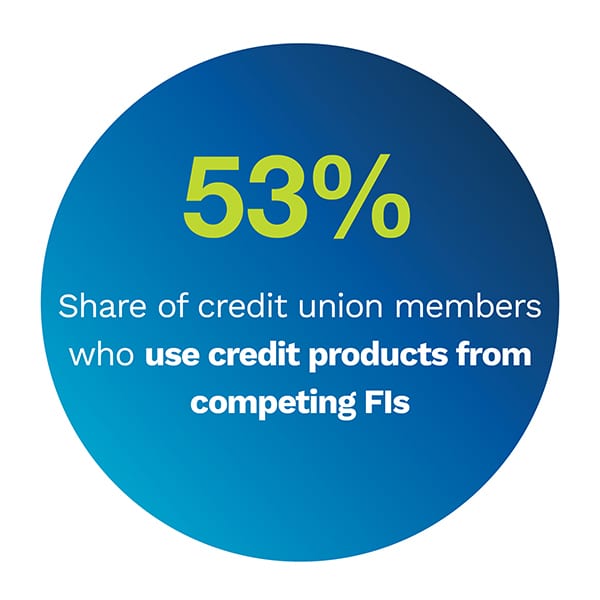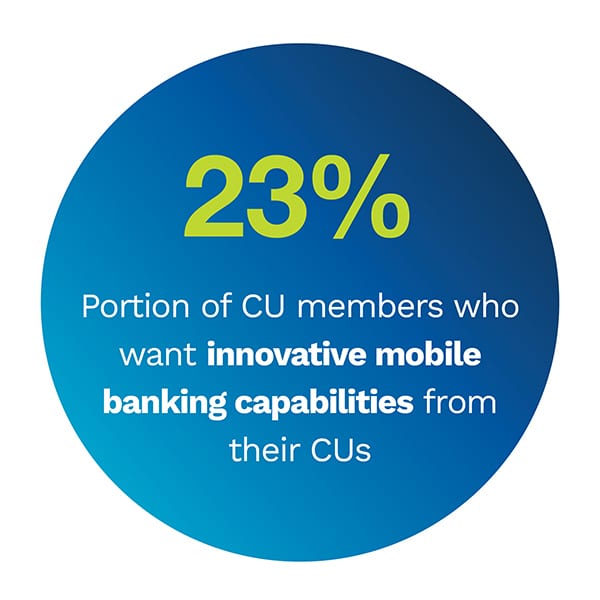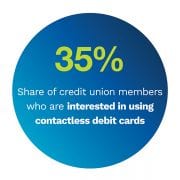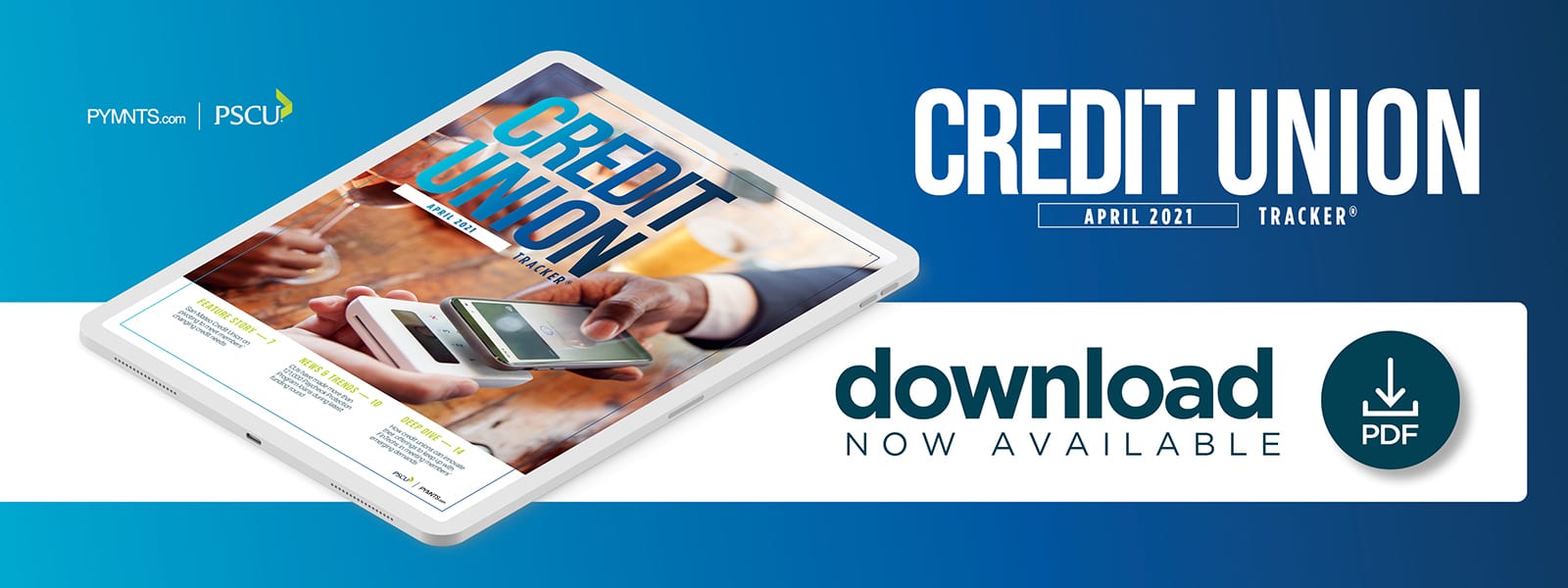Report: Credit Unions Tap Data To Capture Member Credit Business

Improving job rates and the overall health of the economy are contributing to an increase in size of credit unions’ (CUS’) member base. Recent data indicates that CUs’ membership showed a 2 percent year-over-year increase.
Still, CUs have room to improve, especially when it comes to implementing innovative digital services that their members have come to expect. PYMNTS’ Credit Union Innovation Study found that CUs are failing to offer several key features that their members have come to expect from their banking experience.
The April “Credit Union Tracker®” examines the most recent developments in the  CU space, including how members are recovering from the pandemic’s financial turmoil and how member access to innovative credit and debit solutions can improve their satisfaction rates and quickly get them back on their feet.
CU space, including how members are recovering from the pandemic’s financial turmoil and how member access to innovative credit and debit solutions can improve their satisfaction rates and quickly get them back on their feet.
Developments From The Credit Union Space
The onset of the pandemic triggered demand for digital-first banking experiences among consumers across various demographic groups. A year later, research shows that this digital shift is here to stay. According to the Eye on Payments survey by PSCU, card-not-present (CNP) activity for credit and debit increased by 21 percent and 24 percent, respectively. Meanwhile, transactions made using contactless debit and credit cards more than doubled between January 2020 and March 2021.
Once “nice-to-haves,” contactless cards and mobile wallets are expected by members today. Prior to the pandemic, 30 million Americans paid by contactless card or digital wallet. Today, that number is more than 160 million. Three CUs, including American 1 Credit Union, Michigan State University Federal Credit Union, and Navy Federal Credit Union, have looked to introduce new contactless card options to meet this need.
CUs are also playing a n important role in enabling access to loans and credit options for both consumers and small businesses. Data indicates that more than 800 CUs served the nation’s smallest businesses during the most recent round of the Paycheck Protection Program (PPP), enabling access to 121,000 loans totaling $4.6 billion. Meaning, 16 percent of PPP lenders are CUs. One player that stands out nationally is Greater Commercial Lending, a division of the Greater Nevada Credit Union in Carson City, which funded more than 1,750 PPP applications through the Small Business Administration (SBA) for nearly $107 million. Of that number, $35 million was allocated to Nevada businesses.
n important role in enabling access to loans and credit options for both consumers and small businesses. Data indicates that more than 800 CUs served the nation’s smallest businesses during the most recent round of the Paycheck Protection Program (PPP), enabling access to 121,000 loans totaling $4.6 billion. Meaning, 16 percent of PPP lenders are CUs. One player that stands out nationally is Greater Commercial Lending, a division of the Greater Nevada Credit Union in Carson City, which funded more than 1,750 PPP applications through the Small Business Administration (SBA) for nearly $107 million. Of that number, $35 million was allocated to Nevada businesses.
For more on these and other CU news items, download this month’s Tracker.
San Mateo Credit Union On Pivoting To Offering Relevant Credit Product
The pandemic posed various economic challenges for CU members as employment rates declined and healthcare and other costs went up. These challenges have created a need for improved access to innovative credit products and services.
In this month’s Feature Story, Wade Painter, president and CEO of California-based San Mateo Credit Union, told PYMNTS about the CU’s efforts to use a variety of tools to gain insights into members’ changing credit needs during the pandemic and quickly introduce products and services to keep them engaged.
Deep Dive: How CUs Can Innovate Credit Products To Compete With FinTechs In Meeting Members’ Needs
 The economic fallout of the pandemic has hit the nation hard, resulting in job losses and shrinking savings and retirement accounts. These economic challenges have created a demand for improved access to credit. Yet, PYMNTS research shows that a significant share of CU members still turn to FinTechs and other financial institutions (FIs) to access credit products.
The economic fallout of the pandemic has hit the nation hard, resulting in job losses and shrinking savings and retirement accounts. These economic challenges have created a demand for improved access to credit. Yet, PYMNTS research shows that a significant share of CU members still turn to FinTechs and other financial institutions (FIs) to access credit products.
This month’s Deep Dive examines the innovative digital solutions CU members are seeking during the pandemic and how CUs can step up their product offerings to meet this need.
About The Tracker
The “Credit Union Tracker®,” a PYMNTS collaboration with PSCU, is your go-to monthly resource for updates on trends and changes in the credit union industry.
